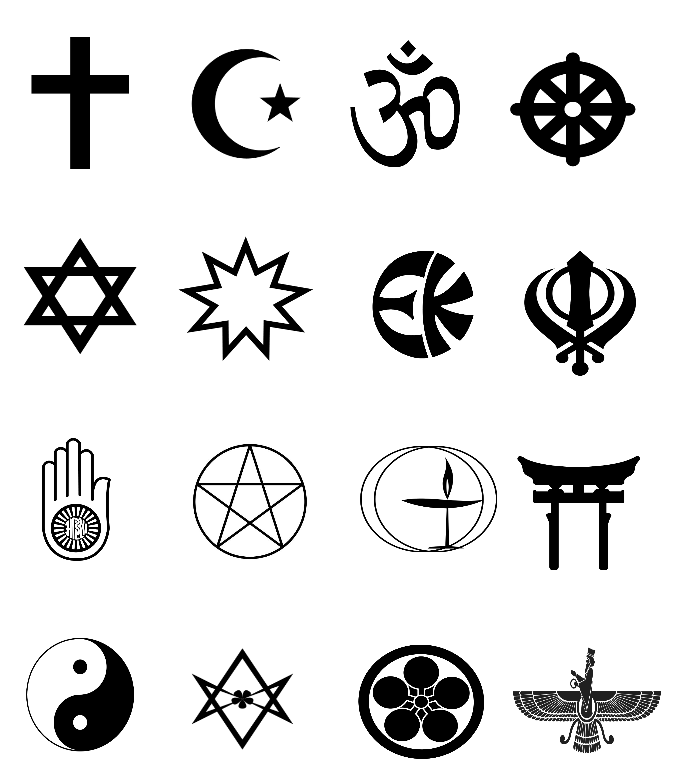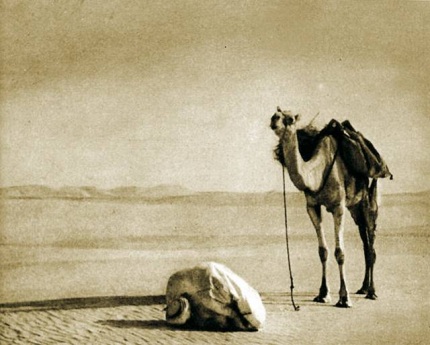|
Forced Conversion
Forced conversion is the adoption of a religion or irreligion under duress. Someone who has been forced to convert to a different religion or irreligion may continue, covertly, to adhere to the beliefs and practices which were originally held, while outwardly behaving as a convert. Crypto-Jews, Crypto-Christians, Crypto-Muslims, Crypto-Hindus and Crypto-Pagans are historical examples of the latter. Religion and proselytization The religions of the world are divided into two groups: those that actively seek new followers (missionary religions) and those that do not (non-missionary religions). This classification dates back to a lecture given by Max Müller in 1873, and is based on whether or not a religion seeks to gain new converts. The three main religions classified as missionary religions are Christianity, Islam, and Buddhism, while the non-missionary religions include Judaism, Hinduism, and Zoroastrianism. Other religions, such as Primal Religions, Confucianism, and T ... [...More Info...] [...Related Items...] OR: [Wikipedia] [Google] [Baidu] |
Religion
Religion is a range of social system, social-cultural systems, including designated religious behaviour, behaviors and practices, morals, beliefs, worldviews, religious text, texts, sanctified places, prophecies, ethics in religion, ethics, or religious organization, organizations, that generally relate humanity to supernatural, transcendence (religion), transcendental, and spirituality, spiritual elements—although there is no scholarly consensus over what precisely constitutes a religion. It is an essentially contested concept. Different religions may or may not contain various elements ranging from the divine, sacredness, faith,Tillich, P. (1957) ''Dynamics of faith''. Harper Perennial; (p. 1). and a supernatural being or beings. The origin of religious belief is an open question, with possible explanations including awareness of individual death, a sense of community, and dreams. Religions have sacred histories, narratives, and mythologies, preserved in oral traditions, sac ... [...More Info...] [...Related Items...] OR: [Wikipedia] [Google] [Baidu] |
Anthropologists
An anthropologist is a scientist engaged in the practice of anthropology. Anthropologists study aspects of humans within past and present societies. Social anthropology, cultural anthropology and philosophical anthropology study the norms, values, and general behavior of societies. Linguistic anthropology studies how language affects social life, while economic anthropology studies human economic behavior. Biological (physical), forensic, and medical anthropology study the biology and evolution of humans and their primate relatives, the application of biological anthropology in a legal setting, and the study of diseases and their impacts on humans over time, respectively. Education Anthropologists usually cover a breadth of topics within anthropology in their undergraduate education and then proceed to specialize in topics of their own choice at the graduate level. In some universities, a qualifying exam serves to test both the breadth and depth of a student's understanding o ... [...More Info...] [...Related Items...] OR: [Wikipedia] [Google] [Baidu] |
Classical Antiquity
Classical antiquity, also known as the classical era, classical period, classical age, or simply antiquity, is the period of cultural History of Europe, European history between the 8th century BC and the 5th century AD comprising the interwoven civilizations of ancient Greece and ancient Rome, Rome known together as the Greco-Roman world, centered on the Mediterranean Basin. It is the period during which ancient Greece and Rome flourished and had major influence throughout much of Europe, North Africa, and West Asia. Classical antiquity was succeeded by the period now known as late antiquity. Conventionally, it is often considered to begin with the earliest recorded Homeric Greek, Epic Greek poetry of Homer (8th–7th centuries BC) and end with the fall of the Western Roman Empire in 476 AD. Such a wide span of history and territory covers many disparate cultures and periods. ''Classical antiquity'' may also refer to an idealized vision among later people of what was, in Ed ... [...More Info...] [...Related Items...] OR: [Wikipedia] [Google] [Baidu] |
Roman Empire
The Roman Empire ruled the Mediterranean and much of Europe, Western Asia and North Africa. The Roman people, Romans conquered most of this during the Roman Republic, Republic, and it was ruled by emperors following Octavian's assumption of effective sole rule in 27 BC. The Western Roman Empire, western empire collapsed in 476 AD, but the Byzantine Empire, eastern empire lasted until the fall of Constantinople in 1453. By 100 BC, the city of Rome had expanded its rule from the Italian peninsula to most of the Mediterranean Sea, Mediterranean and beyond. However, it was severely destabilised by List of Roman civil wars and revolts, civil wars and political conflicts, which culminated in the Wars of Augustus, victory of Octavian over Mark Antony and Cleopatra at the Battle of Actium in 31 BC, and the subsequent conquest of the Ptolemaic Kingdom in Egypt. In 27 BC, the Roman Senate granted Octavian overarching military power () and the new title of ''Augustus (title), Augustus'' ... [...More Info...] [...Related Items...] OR: [Wikipedia] [Google] [Baidu] |
Minority Religion
A minority religion is a religion held by a Minority group, minority of the population of state or which is otherwise politically marginalized. Minority religions may be subject to Social stigma, stigma or discrimination. An example of a stigma is using the term cult with its extremely negative connotations for certain new religious movements. People who belong to a minority religion may be subject to discrimination and prejudice, especially when the religious differences correlate with ethnic differences. Laws are made in some countries to protect the rights of religious minorities, such as protecting the minorities' culture and to promote harmony with the majority. See also * Minority group * Religious minorities in Greece * Religious minorities in India * Religious minorities in Iran * Religious minorities in Iraq * Religious minorities in Pakistan * Religious minorities in Turkey References Minorities Religion and politics {{Reli-studies-stub ... [...More Info...] [...Related Items...] OR: [Wikipedia] [Google] [Baidu] |
Early Christianity
Early Christianity, otherwise called the Early Church or Paleo-Christianity, describes the History of Christianity, historical era of the Christianity, Christian religion up to the First Council of Nicaea in 325. Spread of Christianity, Christianity spread from the Levant, across the Roman Empire, and beyond. Originally, this progression was closely connected to History of the Jews in the Roman Empire, already established Jewish centers in the Holy Land and the Jewish diaspora throughout the Eastern Mediterranean. The first followers of Christianity were Jews who had Proselyte, converted to the faith, i.e. Jewish Christians, as well as Phoenicia, Phoenicians, i.e. Christianity in Lebanon, Lebanese Christians. Early Christianity contains the Apostolic Age and is followed by, and substantially overlaps with, the Patristic era. The Apostolic sees claim to have been founded by one or more of the Apostles in the New Testament, apostles of Jesus, who are said to have Dispersion of the A ... [...More Info...] [...Related Items...] OR: [Wikipedia] [Google] [Baidu] |
Myanmar
Myanmar, officially the Republic of the Union of Myanmar; and also referred to as Burma (the official English name until 1989), is a country in northwest Southeast Asia. It is the largest country by area in Mainland Southeast Asia and has a population of about 55 million. It is bordered by India and Bangladesh to its northwest, China to its northeast, Laos and Thailand to its east and southeast, and the Andaman Sea and the Bay of Bengal to its south and southwest. The country's capital city is Naypyidaw, and its largest city is Yangon (formerly Rangoon). Early civilisations in the area included the Tibeto-Burman-speaking Pyu city-states in Upper Myanmar and the Mon kingdoms in Lower Myanmar. In the 9th century, the Bamar people entered the upper Irrawaddy River, Irrawaddy valley, and following the establishment of the Pagan Kingdom in the 1050s, the Burmese language and Culture of Myanmar, culture and Buddhism in Myanmar, Theravada Buddhism slowly became dominant in the co ... [...More Info...] [...Related Items...] OR: [Wikipedia] [Google] [Baidu] |
Chin People
The Chin peoples (, ) are collection of ethnic groups native to the Chin State, Myanmar that speak the Kuki-Chin-Mizo languages, which are closely related but mutually unintelligible. The Chin identity, as a pan-ethnic identity, is a modern construction, shaped by British rule, Christian missionary influence, and post-independence ethnic politics that has built upon older tribal and regional identities. Ethnonyms Chin (ချင်း, MLCTS: khyang:) is a pseudo-exonym, a Burmese language adaptation of the Asho Chin word ''khlong'' or ''khlaung'', which means "man" or "person." Burmese speakers approximated the Asho Chin word, and began to apply the exonym to all nearby groups residing in the Arakan Mountains and Chin Hills. The Burmese term first appeared in stone inscriptions dating to the reign of King Kyansittha in the 11th century. The term "Chin" is not universally accepted by all groups living in Chin State nor by all Kuki-Chin groups. Groups in the north pre ... [...More Info...] [...Related Items...] OR: [Wikipedia] [Google] [Baidu] |
Three Jewels And Three Roots
In Tibetan Buddhism, the Three Jewels and Three Roots are supports in which a Buddhist takes refuge by means of a prayer or recitation at the beginning of the day or of a practice session. The Three Jewels are the first and the Three Roots are the second set of three Tibetan Buddhist refuge formulations, the ''Outer'', ''Inner'' and ''Secret'' forms of the Three Jewels. The 'Outer' form is the 'Triple Gem' (Sanskrit: ''triratna''), the 'Inner' is the Three Roots and the 'Secret' form is the 'Three Bodies' or trikāya of a Buddha. These are: * the Buddha, the fully enlightened one * the Dharma, the teachings expounded by the Buddha * the Saṅgha, the monastic order of Buddhism that practice the Dharma * the Lama (Sanskrit: ''guru'') is the 'root of blessing' or 'root of grace' * the Yidam (Sanskrit: ''ishtadevata'') is the 'root of methods' or 'root of accomplishments' * the Dakini or Dharmapala is the 'root of activity' or 'root of protection'. The additional refuge formula ... [...More Info...] [...Related Items...] OR: [Wikipedia] [Google] [Baidu] |
Refuge In Buddhism
In Buddhism, refuge or taking refuge refers to a religious practice which often includes a prayer or recitation performed at the beginning of the day or of a practice session. Its object is typically the Three Jewels (also known as the Triple Gem or Three Refuges, Pali: ''ti-ratana'' or ''ratana-ttaya''; Sanskrit: ''tri-ratna'' or ''ratna-traya''), which are the Buddha, the Dharma, and the Sangha. Taking refuge is a form of aspiration to lead a life with the Triple Gem at its core. In early Buddhist scriptures, taking refuge is an expression of determination to follow the Buddha's path, but not a relinquishing of responsibility. Refuge is common to all major schools of Buddhism. Since the period of Early Buddhism, all Theravada and mainstream Mahayana schools only take refuge in the Triple Gem. However, the Vajrayana school includes an expanded refuge formula known as the Three Jewels and Three Roots. Overview Since the period of Early Buddhism, devotees expressed their ... [...More Info...] [...Related Items...] OR: [Wikipedia] [Google] [Baidu] |
Clique
A clique (AusE, CanE, or ; ), in the social sciences, is a small group of individuals who interact with one another and share similar interests rather than include others. Interacting with cliques is part of normative social development regardless of gender, ethnicity, or popularity. Although cliques are most commonly studied during adolescence and middle childhood development, they exist in all age groups. They are often bound together by shared social characteristics such as ethnicity and socioeconomic status. Examples of common or stereotypical adolescent cliques include athletes, nerds, and "outsiders". Typically, people in a clique will not have a completely open friend group and can, therefore, "ban" members if they do something considered unacceptable, such as talking to someone disliked. Some cliques tend to isolate themselves as a group and view themselves as superior to others, which can be demonstrated through bullying and other antisocial behaviors. Terminology With ... [...More Info...] [...Related Items...] OR: [Wikipedia] [Google] [Baidu] |
Compassion
Compassion is a social feeling that motivates people to go out of their way to relieve the physical, mental, or emotional pains of others and themselves. Compassion is sensitivity to the emotional aspects of the suffering of others. When based on notions such as fairness, justice, and interdependence, it may be considered partially rational in nature. Compassion involves "feeling for another" and is a precursor to empathy, the "feeling as another" capacity (as opposed to sympathy, the "feeling towards another"). In common parlance, active compassion is the desire to alleviate another's suffering. Compassion involves allowing oneself to be moved by suffering to help alleviate and prevent it. An act of compassion is one that is intended to be helpfulness, helpful. Other virtues that harmonize with compassion include patience, wisdom, kindness, Psychological resilience, perseverance, warmth, and resolve. It is often, though not inevitably, the key component in altruism. The differ ... [...More Info...] [...Related Items...] OR: [Wikipedia] [Google] [Baidu] |






